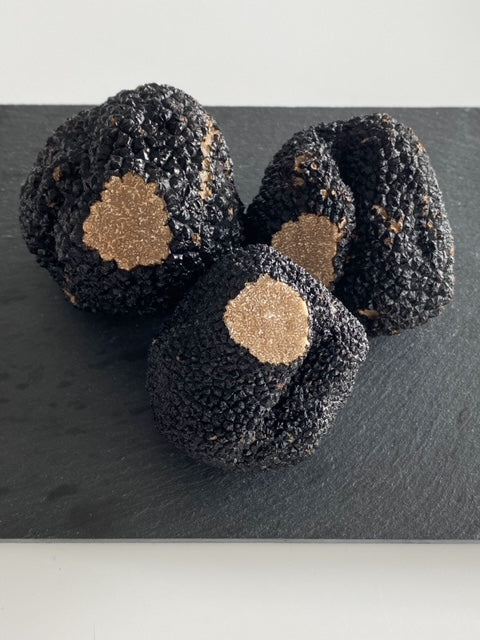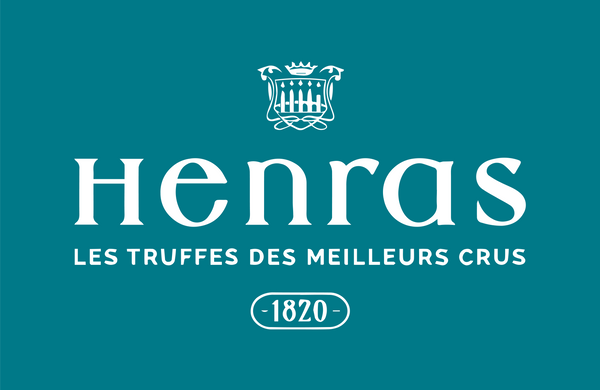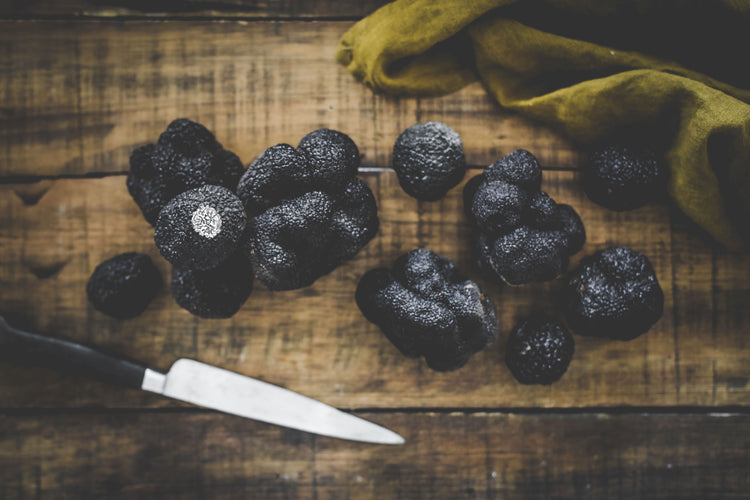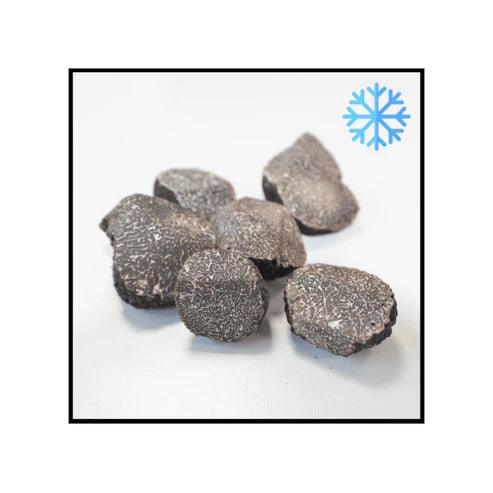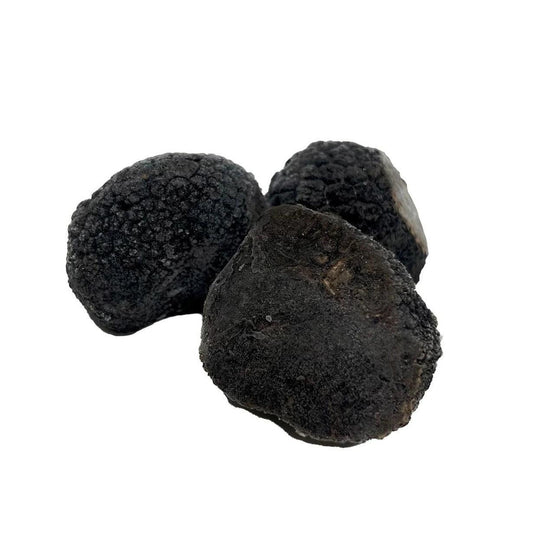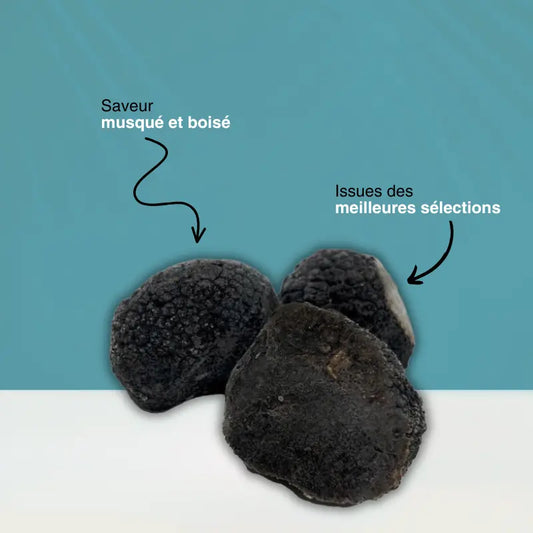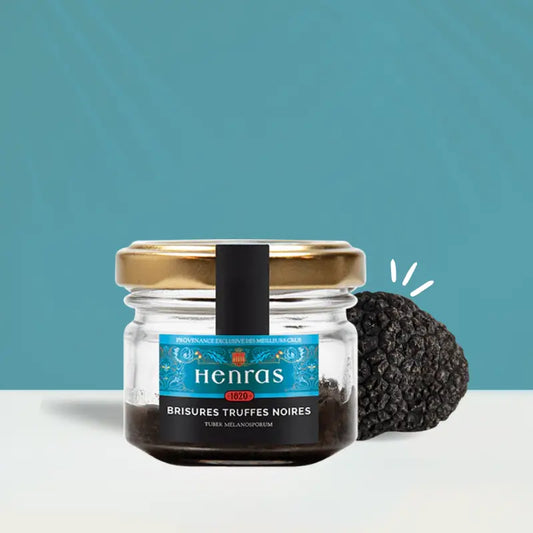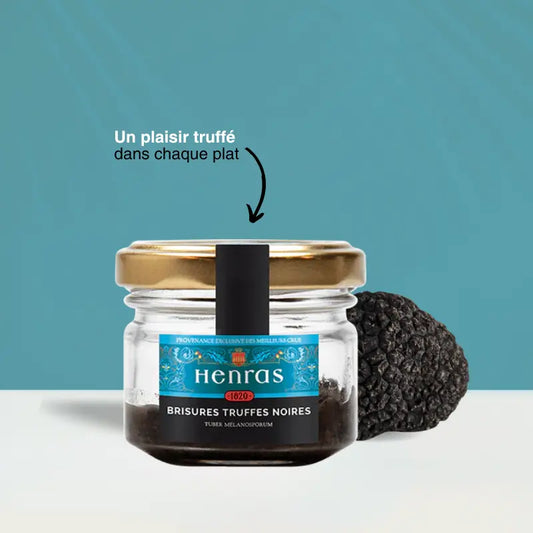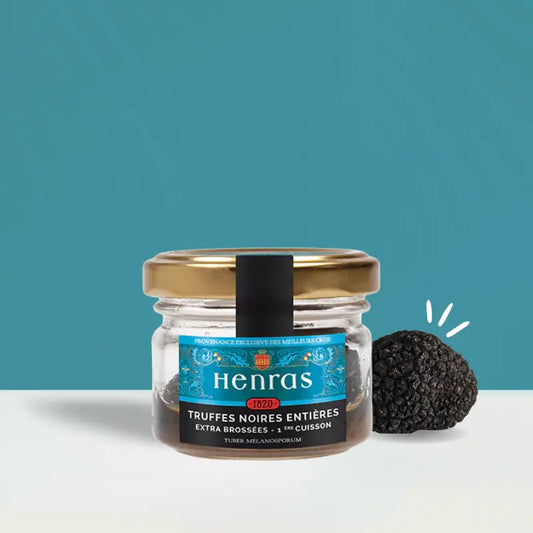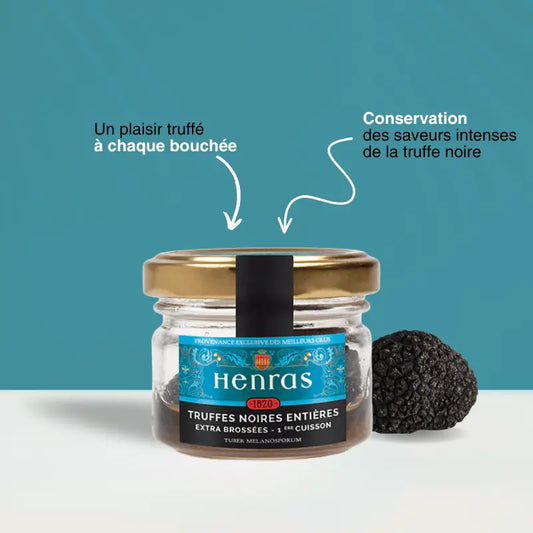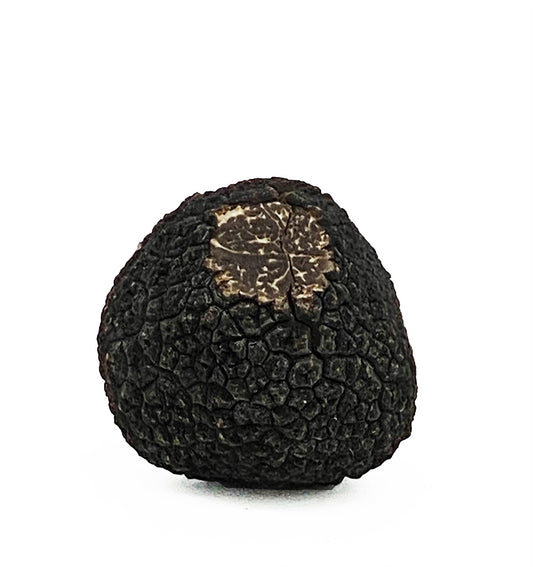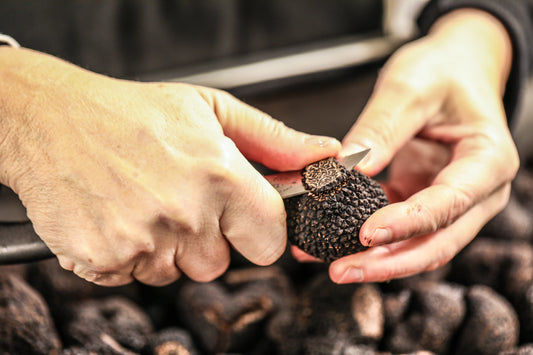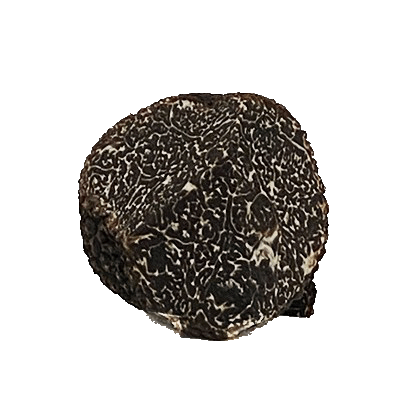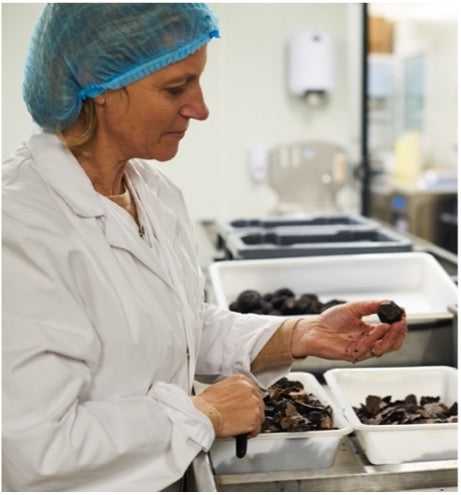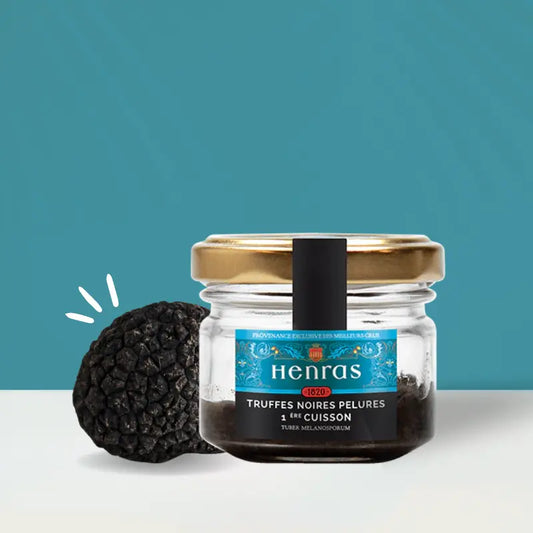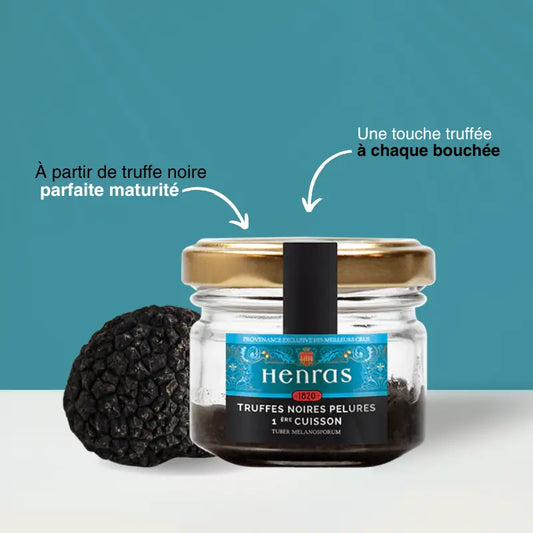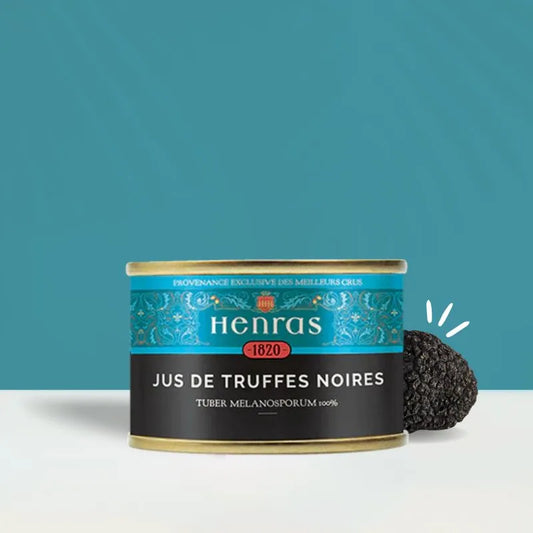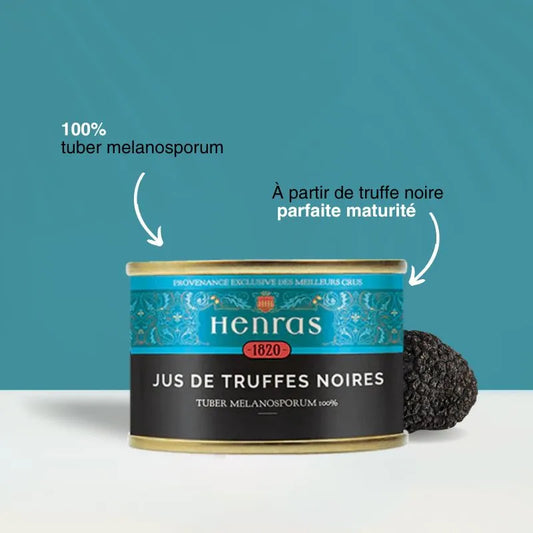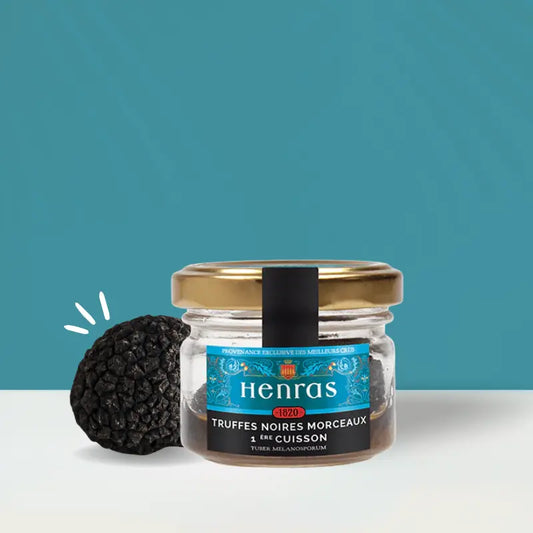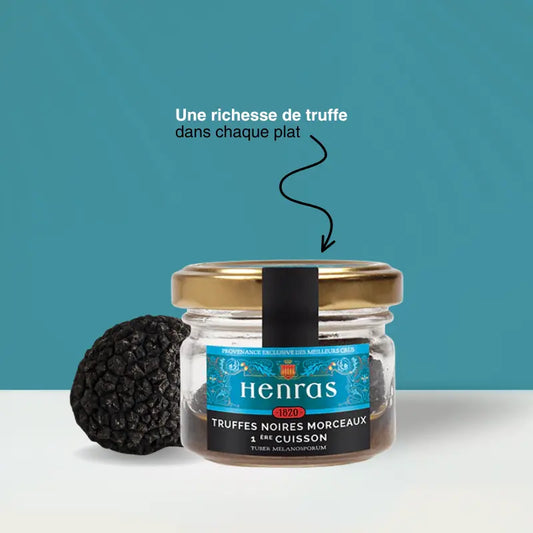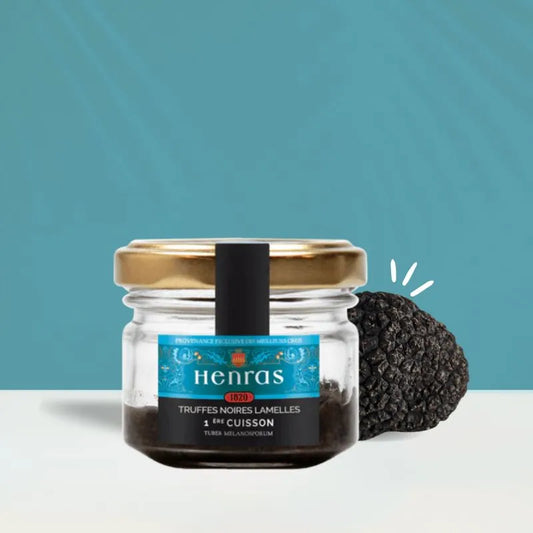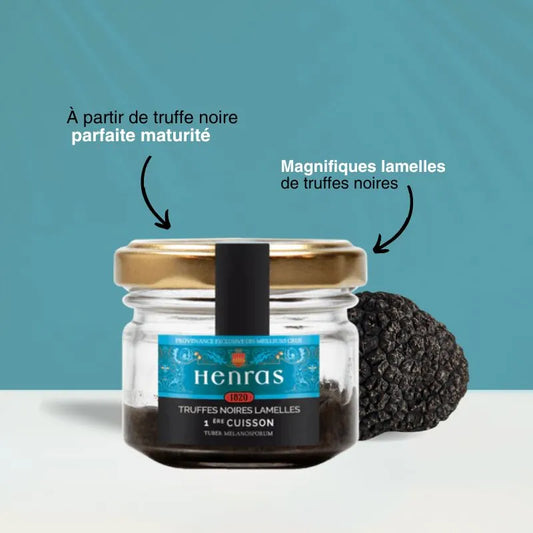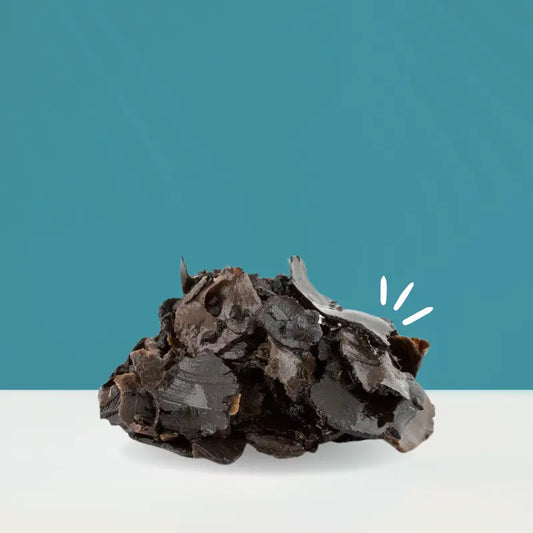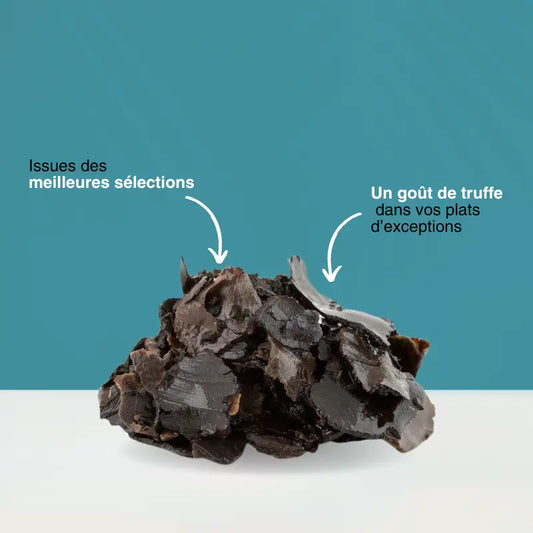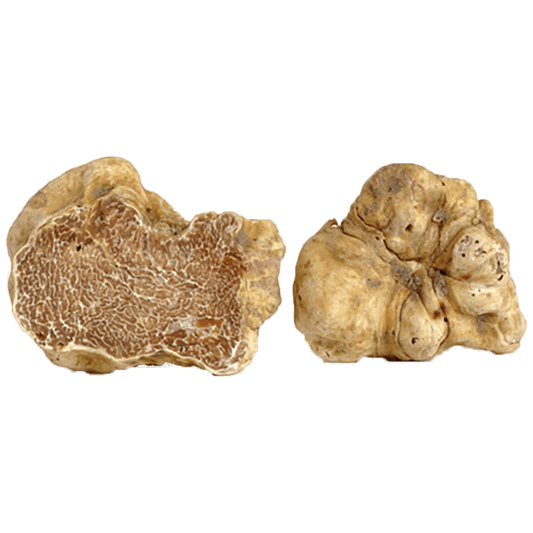IN THE TRUFFLES CATEGORY
-
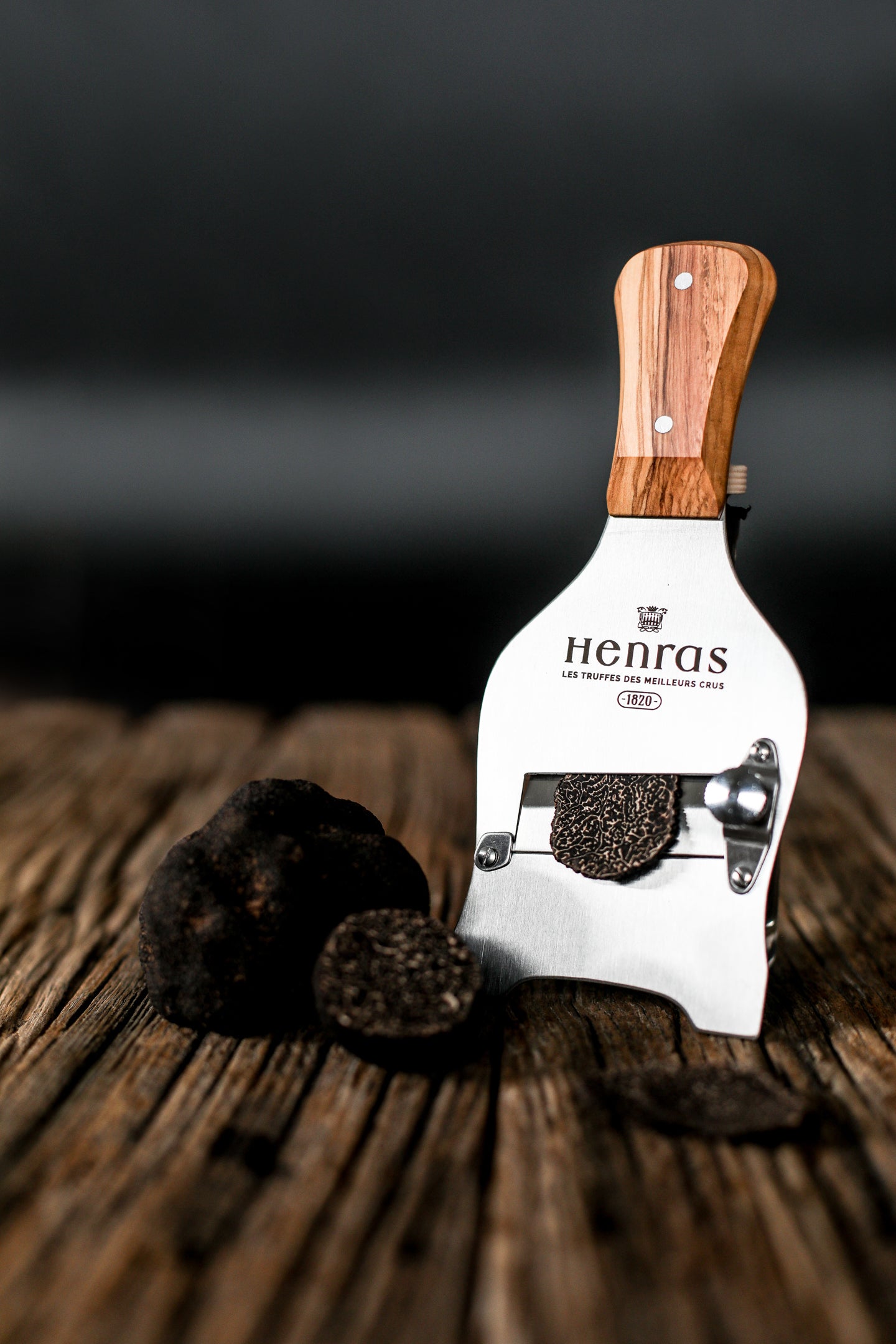
Discover the Ultimate Fresh Truffle Experience: Winter Delicacies from Around the World...
-
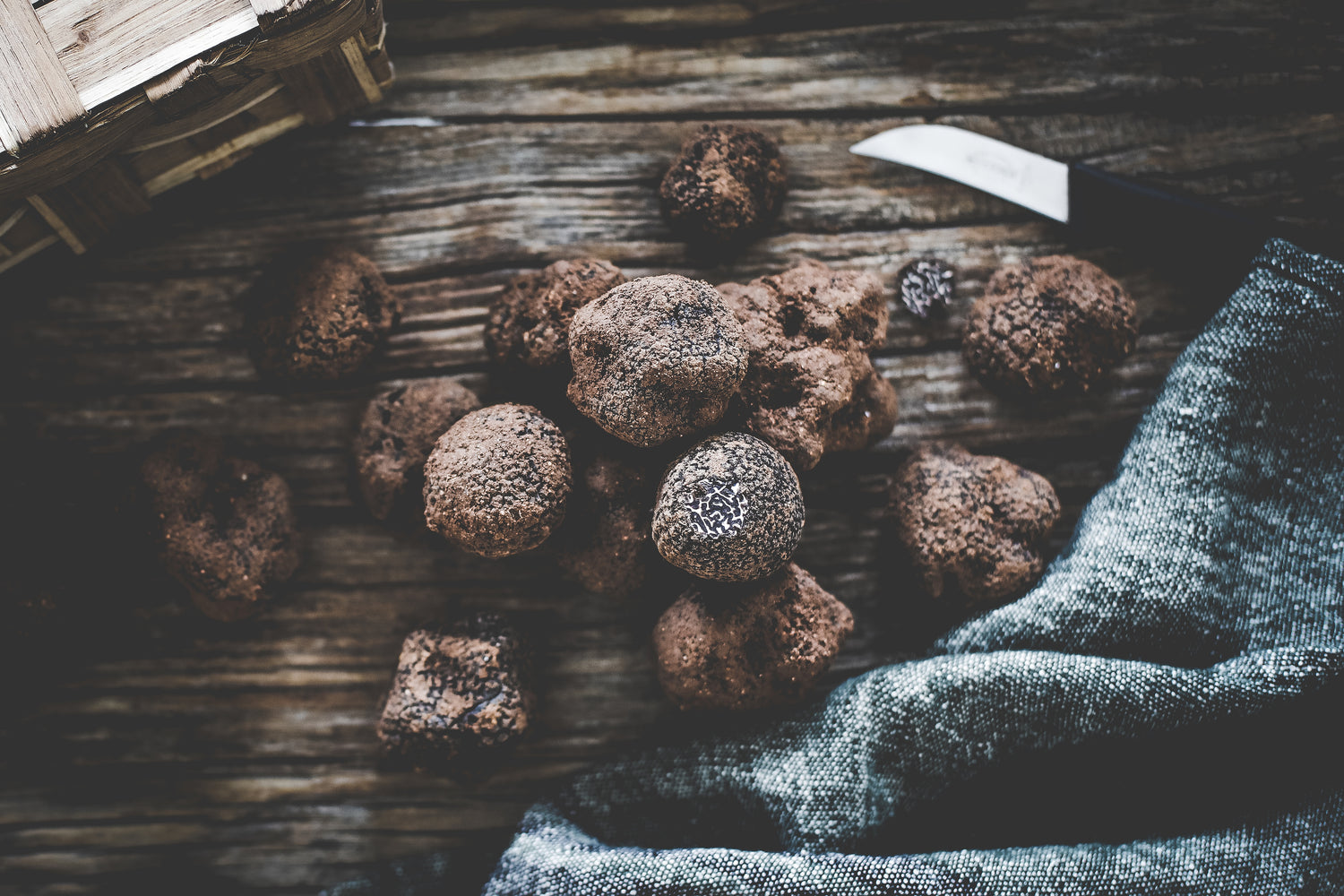
At Maison Henras, we have mastered the art of freezing, perfectly preserving...
-
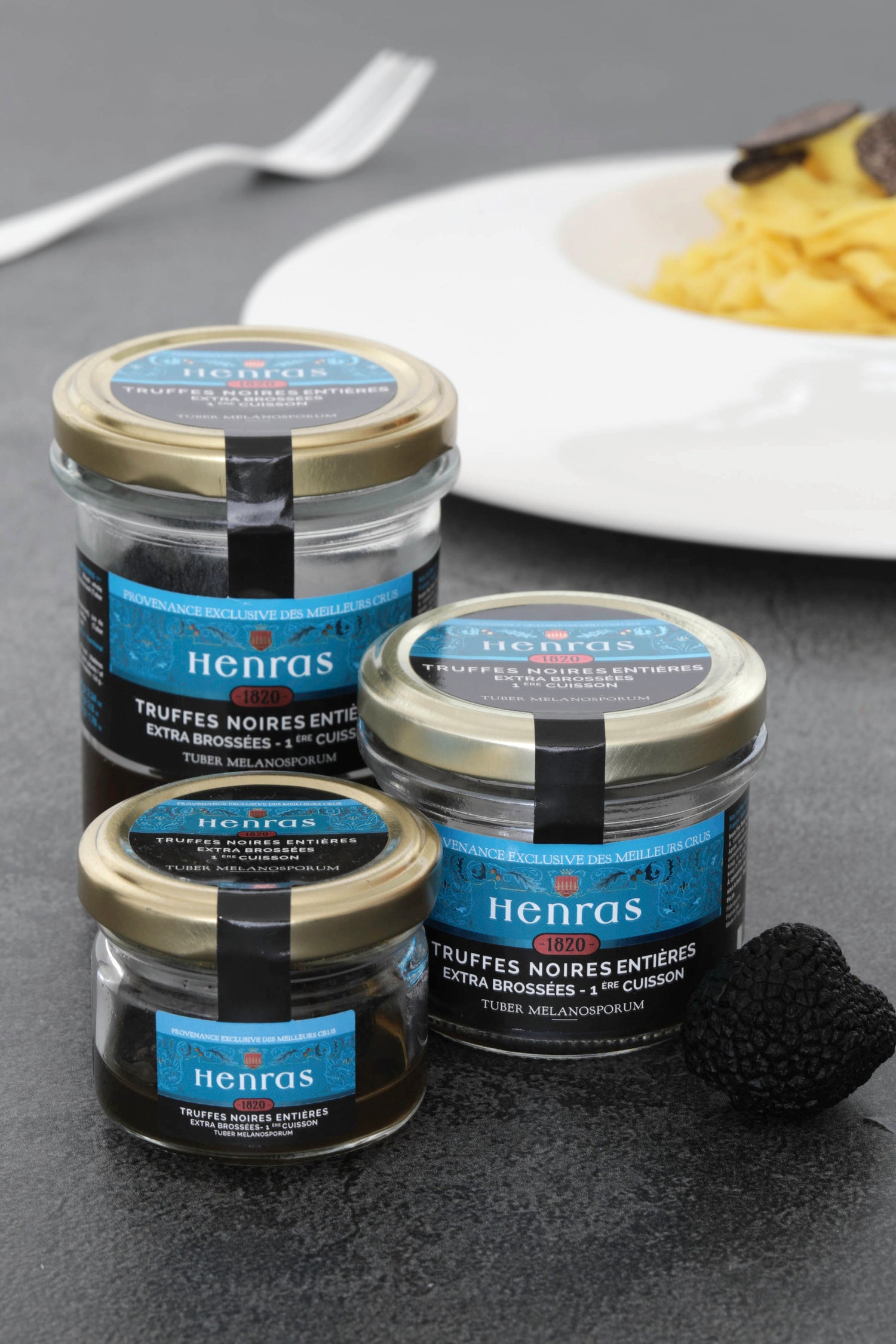
Discover our range of first boil and second boil canned truffles.
-
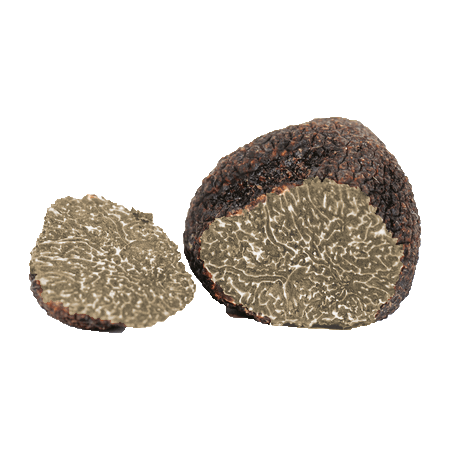 Sold out
Sold out -
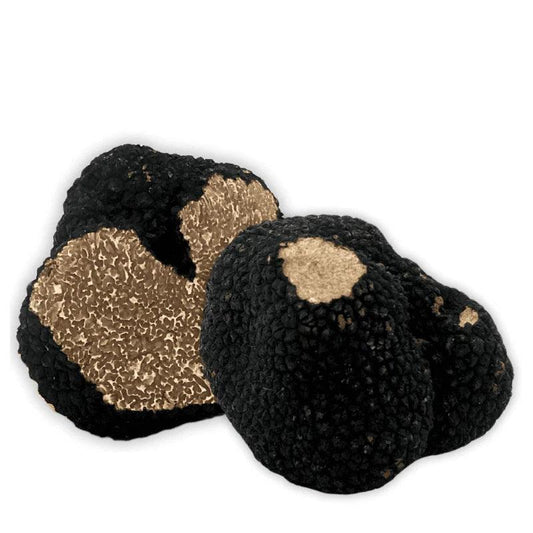
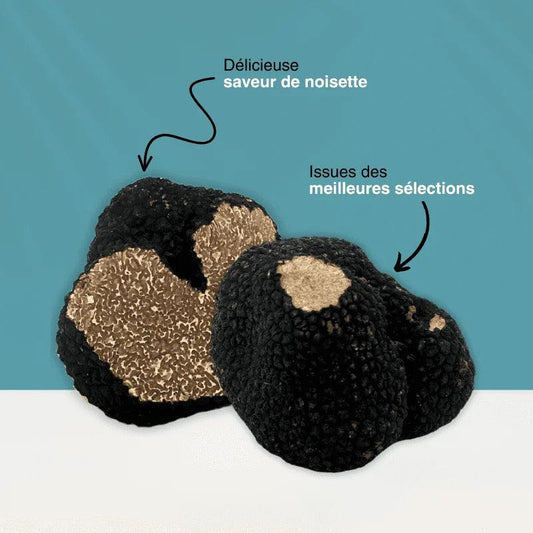 Sold out
Sold out -
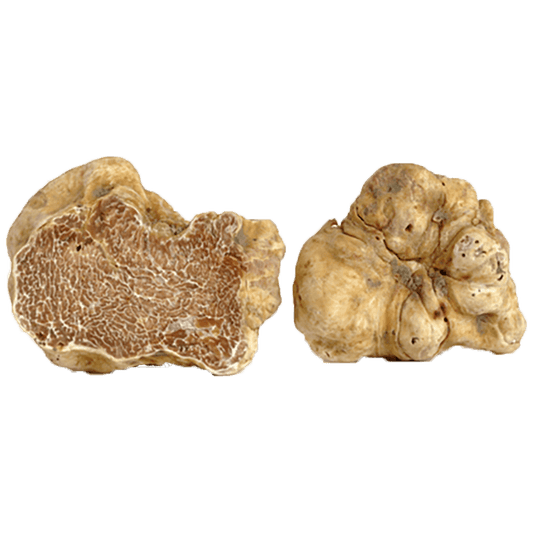
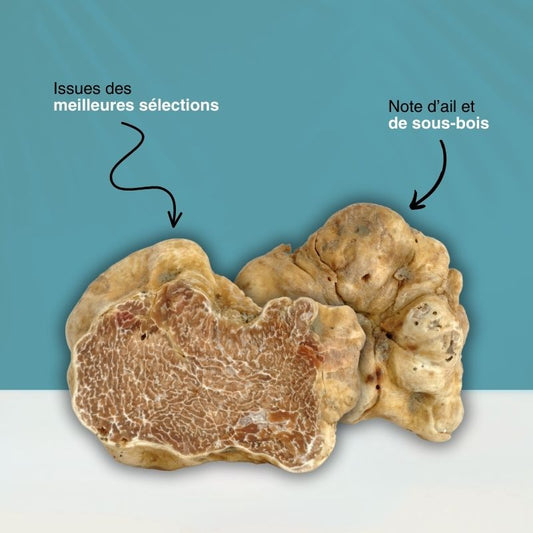 Sold out
Sold out -
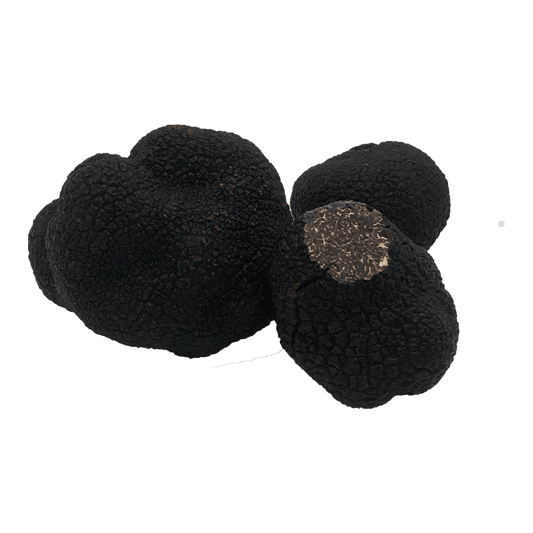 Sold out
Sold out
-
 SECURE PAYMENT
SECURE PAYMENTPay your order securely by credit card and Paypal
-
 FREE DELIVERY
FREE DELIVERYFrom 60€ of purchase, your delivery is free!
-
 CUSTOMER SERVICE
CUSTOMER SERVICEMonday to Friday from 9 a.m. to 5 p.m. on 05 31 60 02 11 (non-surcharged call)
-
 EXPRESS DELIVERY
EXPRESS DELIVERYVacuum-packed truffles + ice pack
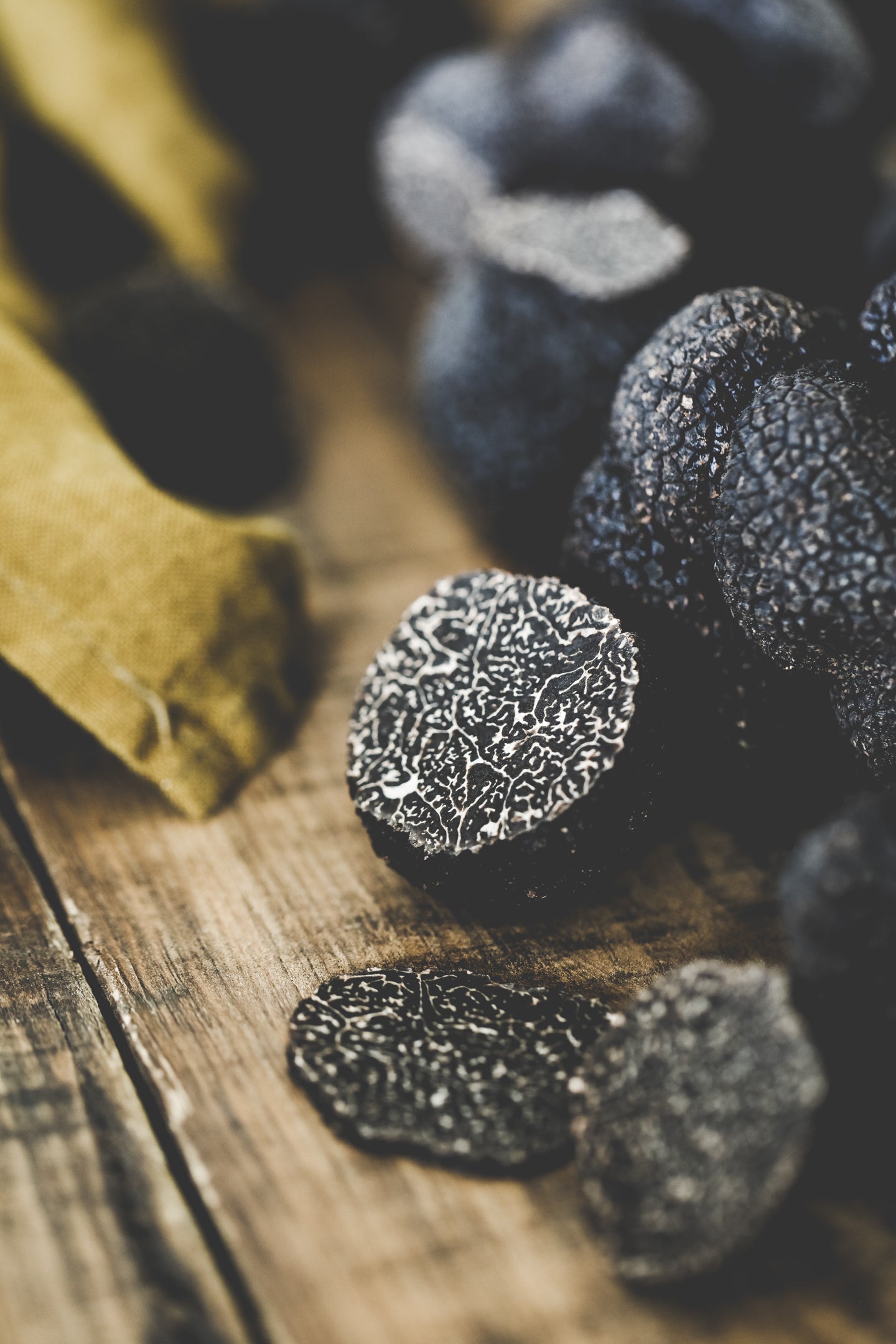
FRESH TRUFFLES
Throughout the year, Maison Henras selects the best batches of fresh truffles from its partner truffle growers. The fresh Périgord black truffle or tuber melanosporum concerns a large majority of the work carried out by our teams. Indeed, we work it whole or in pieces during the winter periods. However, the work of fresh truffles is also spread over the whole year, with the summer truffle or tuber aestivum during the summer periods then the Burgundy truffle in the fall.
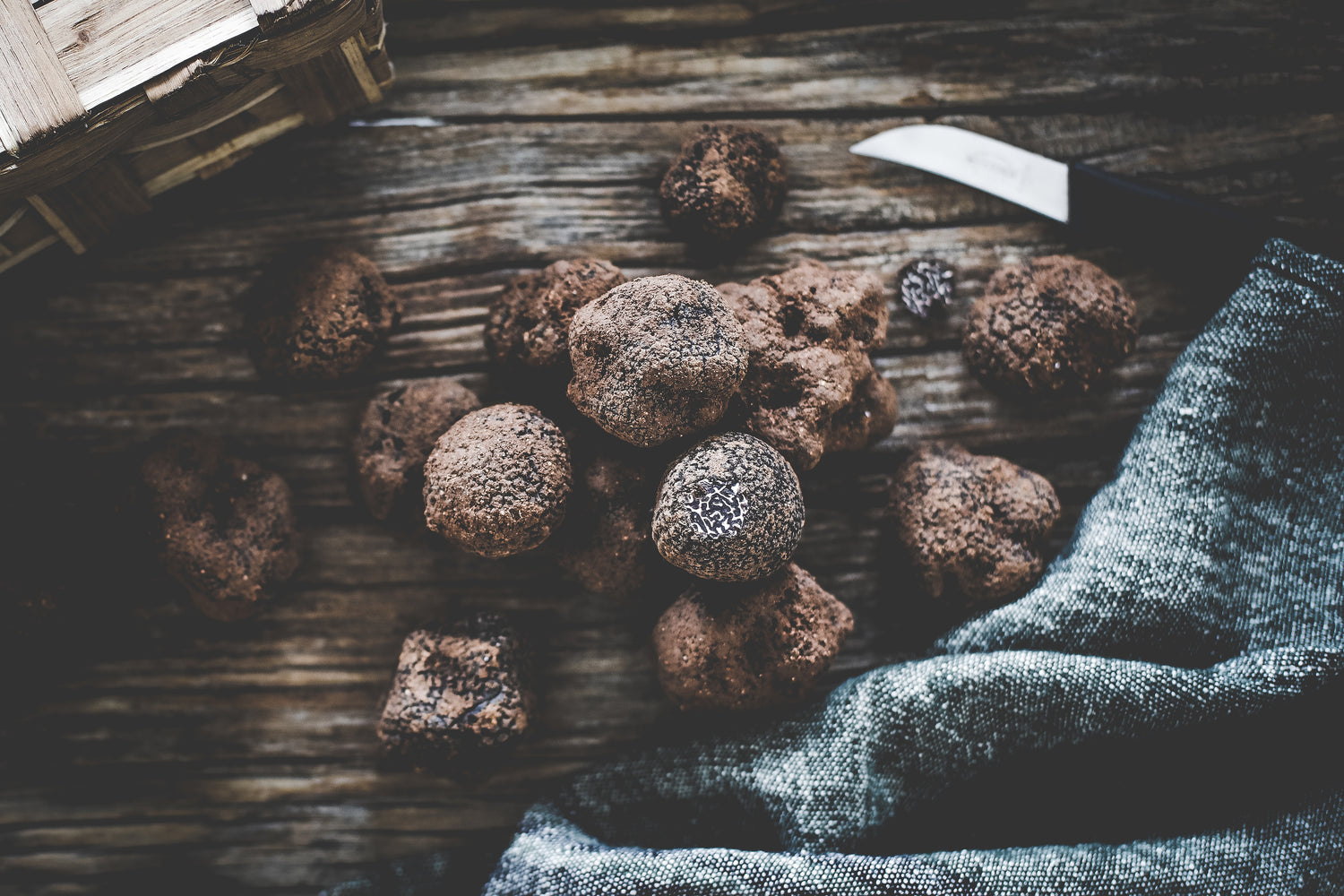
FROZEN TRUFFLES
Maison Henras constantly seeks to meet all the expectations of its customers. With this in mind, she decided to market frozen black truffles, for always more black diamonds all year round. The truffles selected are fresh truffles with a perfect shape, and a powerful and tasty taste of the season. Their undeniable taste and olfactory qualities remain intact thanks to the freezing process, only their texture varies slightly.
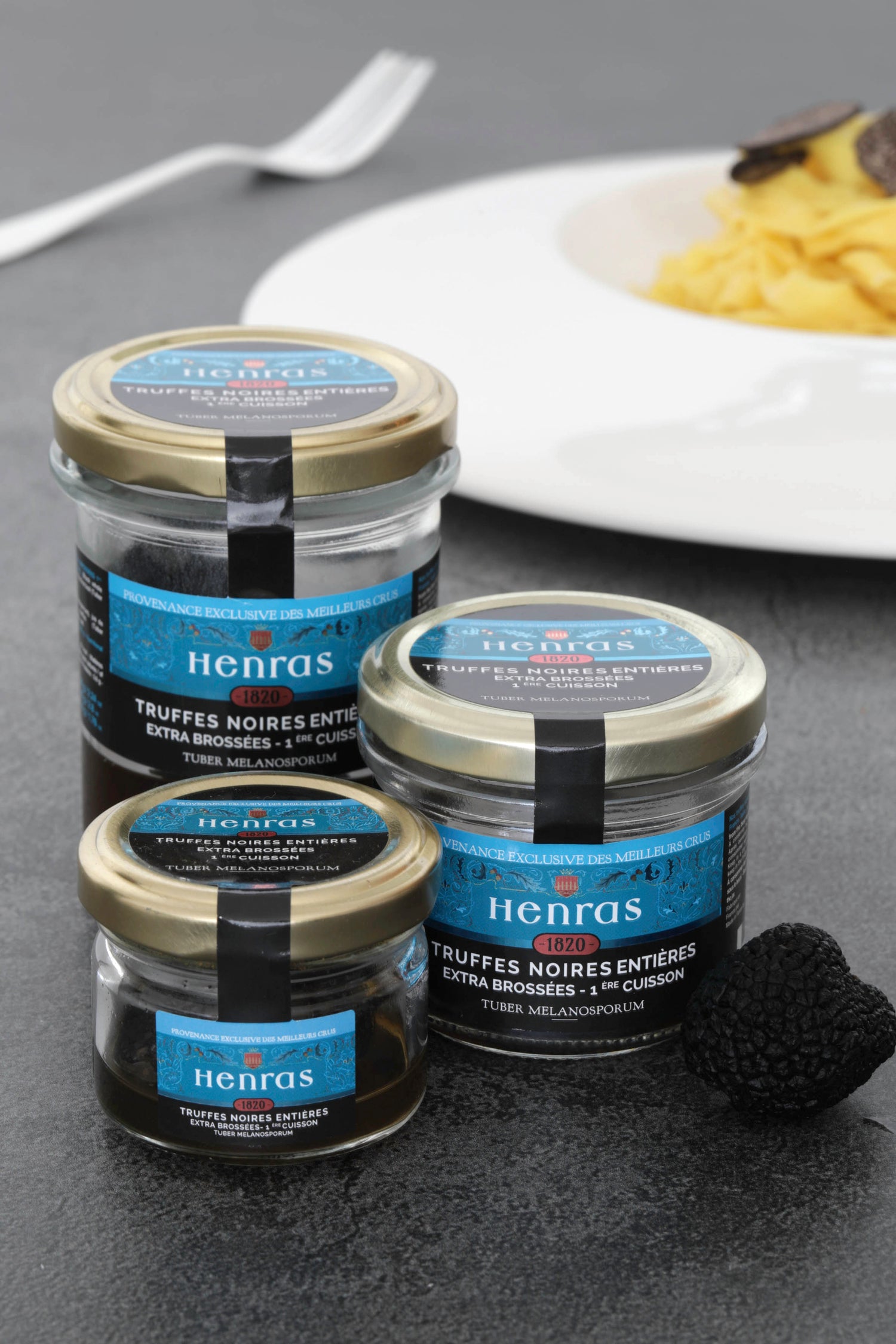
CANNED TRUFFLES
The Périgord black truffle is an exceptional dish, and that is why Maison Henras has decided to offer its customers the possibility of consuming it all year round, with its canned truffles. The black truffle is offered in all its forms: whole, in pieces, in strips, in peel, in pieces and even in juice. These preserves are made from the ultimate in black truffles. Indeed, they are made from fresh black truffles in season at full maturity, which were not sold during the winter period.
Maison Henras preserves have undergone a unique and singular heat treatment, allowing them to retain a large part of their flavors and their fragile aromas.
COMPLEMENTARY QUESTIONS
What are the different varieties of truffles?
There are 4 main varieties of truffles.
First of all, the black truffle (Tuber Melanosporum) also called black winter truffle. This species of truffle is harvested in France (in the South-West, South-East), in Spain, Italy, and in summer in the southern hemisphere (Australia, Chile). It is considered a symbol of French gastronomy, with its scent reminiscent of the undergrowth. Unlike all other species, it is eaten raw but also cooked and makes excellent preserves. It has a black color, with small roughness resembling the shape of small diamonds and flesh (gleba) of intense black, marbled with white when fully ripe. Please note, the name “Périgord Truffle” is not a designation guaranteeing the origin, but rather the species of truffle. It is picked in France from November to the end of March.
The white Alba truffle or Tuber Magnatum Pico is another variety of truffle, known to be the most expensive because it is a wild truffle that cannot be cultivated. It is harvested in Italy, particularly around the town of Alba in Piedmont, but also widely in the Balkans. It then passes through Italy to end up on tables around the world. A quality Italian truffle is recognizable by its fine, smooth, sometimes velvety skin, the light yellow color of which can tend towards ocher, pinkish white or even gray. The latter has flavors and a strong allied scent. It is only eaten raw and loses all its organoleptic qualities when cooked, which is why professionals do not preserve it. It is picked from the beginning of October to the end of December.
The summer truffle or Saint Jean truffle is a truffle with a light scent and notes of mushrooms and hazelnuts. Its exterior appearance is brown and the interior of the nose tends from beige to brown. It is of little taste interest and can only be consumed raw. It is mainly harvested in Bulgaria and Romania, and a little in France. Its harvest extends from the end of May to the end of August.
The Burgundy truffle (or autumn truffle), Tuber aestivum var Uncinatum, is a late variety of summer truffle. Its taste is a little more pronounced but like its cousin, the summer truffle, it cannot be cooked and is of very limited taste. Its color is similar to that of the summer truffle, known as the Saint John truffle. It is often smaller and its shape is more irregular. Its gleba is beige, even light brown and its skin is thick. It is mainly harvested in the Balkans, French production does not exceed one ton. It is collected between September and November.
When to pick truffles?
The harvest period is not the same depending on the truffle varieties.
In the Northern Hemisphere, the black truffle is harvested between November and March , the Italian white truffle between September and December , while the summer truffle, or Saint John's truffle, is harvested from May to December. 'august. Finally, Burgundy truffles are picked from September to October.
How much does a kilo of truffles cost?
Truffle prices are set weekly, during the “campaigns”, that is to say in peak season. They are the result of prices observed on wholesale markets (see France Agrimer), but above all of the intensity of demand and the importance of supply. The latter is affected by many factors such as the weather, the state of the truffle fields, the ability of truffle growers to operate regularly, etc. Truffle “releases” are not an exact science and some weeks produce few tubers.
All these factors make its price difficult to predict from one week to the next, and impossible to determine from one season to the next. Prices generally rise in December, then drop a little in the first week of January before starting to rise again until the end of March. Sometimes, from one week to the next they can increase by 70%. In 2023, when purchasing in bulk (truffles in the ground, all-comers category) from truffle growers, in mid-March, prices reached an unprecedented level, more than €1,200 per kilo...
Furthermore, the prices observed on the markets do not reflect the real cost of a clean truffle ready to be consumed. These courses focus on batches of “earth” truffles. On these truffles, the following losses add up: between 5% and 10% of soil which leaves during cleaning, on the remainder, that is to say cleaned truffles, there is only 10% of the batch which can be sold as “whole truffles” (Extra or 1st choice), 20% in pieces (truffles whose excessively damaged parts are cut) and the rest can only be transformed into peels or pieces.
This explains the significant difference observed between the prices recorded on the markets and those offered by the selection houses (also called trading houses) which carry out this tedious work of cleaning, sorting, cutting and selection.
Which trees give truffles?
Truffle farming is closely linked to certain tree species. The holm oak, which retains its leaves throughout the winter, as well as the white oak, are both well-known truffle trees in truffle-growing regions.
However, there is a great diversity of truffle trees , including over 30 different varieties, including sessile oak, birch, hornbeam, and even beech, to name a few. It is essential to keep in mind that each variety of truffle has its particular preferences when it comes to truffle trees. For example, the winter tuber, better known as the black truffle, prefers pedunculate oaks, holm or downy oaks, as well as trees such as linden and hazel.
How do you know if you have truffles under an oak tree?
Knowing if you have truffles under an oak tree is relatively complex. Careful observation of your trees and the land is essential. Burnt areas on the ground and discolored leaves can be signs of the presence of truffles. However, the most effective way to find them remains the use of truffle dogs.
How to find truffles without animals?
You should know that it is relatively complex to find a truffle without a dog. However, certain signs and details can help guess their location. Indeed, a cracked ground, an area, forming a circle, completely burned under a truffle tree, are all signs which can suggest the presence of truffles.
What is the price of a truffle tree?
Specialized nurseries offer so-called “mycorrhizal” truffle tree plants. The quality of this mycorrhization plays a fundamental role in the tree's ability to produce truffles. Indeed, the truffle is the fruit of mycelium, a root network developed by the mycorrhizal truffle tree. Without the mycelium, no truffles. It is also this mycelium which “burns” the soil at the foot of the mycorrhizal trees, thus testifying to the development of this underground “vegetable web” which can produce truffles.
The price of a truffle tree varies. This will depend first of all on the variety of truffle that we wish to produce. The price of a truffle tree will be more expensive for Tuber Melanosporum (15-30€) than for Tuber Aestivum. Then, its price will also vary depending on the species of truffle tree chosen (oak, hazel, etc.) and of course its level of growth as well. We invite you to contact expert nurseries who can guarantee you and give you their opinion on the good mycorrhization of the truffle tree plants they offer.
When to use truffle oil?
Truffle oil is a very easy to use product that can accompany all your dishes, raw or hot. Simply pour a drizzle over a hot preparation, at the end of cooking or over a salad, when seasoning.
What is the price of truffles today?
In season, the price of truffles fluctuates every day, you can find our current prices for fresh truffles on our online site. Pay attention to the prices presented on the markets, these are often wholesale prices for ground truffles , that is to say including “all-comers”. The loss noted can be up to 40% of the land lot purchased.
Where do you buy truffles?
It is possible to buy truffles online , near specialized houses like Maison Henras: try our selection of fresh truffles, in stock, and give us your opinion. You can also get truffles on the various markets taking place during the season, notably in the South-East (Carpentras, Richerenches, etc.) and South-West (Sarlat, Lalbenque, etc.) of the France, but on the markets, the truffle offered is “in the ground”. You will have 10% loss in the form of soil during cleaning, as well as product loss because you will not be buying an “EXTRA” or “1st choice” truffle but a batch including “all-comers”.
Where do truffles grow in France?
The South-East (Provence) and South-West (Périgord and Quercy) are the main geographical areas where truffles grow in France. There are also some crops in Charentes and Tourraine. They are notably the most important producing regions of this black diamond in France.
How to make a truffle?
Creating a truffle farm is a complex process that takes time.
Indeed, you must choose the right location, if possible untouched, far from woods or forests, with suitable soil. To do this, you must have it analyzed to know the pH level as well as the nutrients present. Truffles only grow in draining soils. Once this step has been validated, you must purchase mycorrhizal truffle trees with the one you wish to produce.
Finally, all you have to do is plant your trees on your land, around 200 to 400 trees per hectare and provide an optimal irrigation system to feed the plants.
Tillage and tree maintenance are important factors. Each truffle grower adopts its own strategy and carries out tests to try to improve its production.
It takes approximately 7 to 10 years for a truffle farm to produce and the average production observed among the most seasoned professionals is 20 kg/hectare, for 3 to 4 years. The truffle plantations only last for a while, you will have to uproot the trees after 15 years, wait a few years for the soil to work and replant. Truffle farming is a lifetime's work, with no guarantee of yield.
What are the best truffle recipes?
A truly exceptional product, the truffle enhances recipes and dishes with its characteristic taste and smell. Maison Henras has selected its best recipes based on this magnificent tuber just for you.
The irresistible frozen black truffle rosties, this recipe is an exquisite combination of grated potatoes and this frozen black diamond. If you want a more traditional recipe, try the essential fresh black truffle omelette. Finally, for an elegant main course or starter, mushroom velouté with canned truffle juice is a divinely creamy option. These different recipes and dishes will fill your taste buds with happiness.
How to choose a truffle?
Truffle is a food that is not always easy to choose.
When you buy a truffle in winter, always check the notice specifying the species in Latin: tuber melanosporum (from Périgord), tuber magnatum pico,... (white truffle from Italy).
Please note that a black truffle purchased in December will be “primeur”, that is to say at the start of the season. The peak season for this exceptional food being the month of February, you will take less risk by purchasing it during this period.
To check the ripeness of a black winter truffle, look at the cut made with a penknife: its gleba (flesh) must be black with fine white veins. Lighter flesh will be a sign of immaturity. If the latter has no white veins and is completely black, then this will mean that it has frozen.
We also encourage you to touch the nose , palpate it and only remember the firm ones. Also check your nose for holes as this could be a sign that it is wormy.
Sometimes a mature truffle may have a slight odor, but that doesn't mean it won't have any taste. Smelling it and choosing the most fragrant ones, contrary to popular belief, does not guarantee quality. Even “soft”, it can have an excellent smell…
If you want to save yourself any hazards, our House carries out this work for you. Our truffles are all canifed and selected by our experts. If you are ever dissatisfied, do not hesitate to contact us to explain the problem.
Where are the most beautiful truffle markets?
The truffle market is a unique folkloric and cultural experience. These markets, present in certain French regions, allow you to discover the fascinating world of truffles. A certain number of markets stand out for their authenticity and reputation.
In the South-West of France, the markets of Jarnac, Sarlat and Lalbenque are a real tradition with real truffle auras. Find out on the municipal websites to find out which days are dedicated. In the South-East, the black winter truffle can be found on the stalls of Carpentras and Richerenches . You can buy truffles directly in batches and enjoy some truffle culinary specialties offered by the restaurateurs on site.
How to use truffle sauce?
Black truffle sauces go perfectly with meats (red meats, white meats, poultry), but also pasta, rice, potatoes and even polenta. As the Périgord black truffle does not tolerate high temperatures, we invite you to heat your sauce in a bain-marie and to ban the use of the microwave.
At Maison Henras, we make all our exceptional sauces in our workshop (located in Montauban) from our black truffles , which you can find in stock on our website, online. Do not hesitate to leave us your opinion, we do not use any added flavoring, just fully mature truffles, harvested in February for a very delicate flavor.
